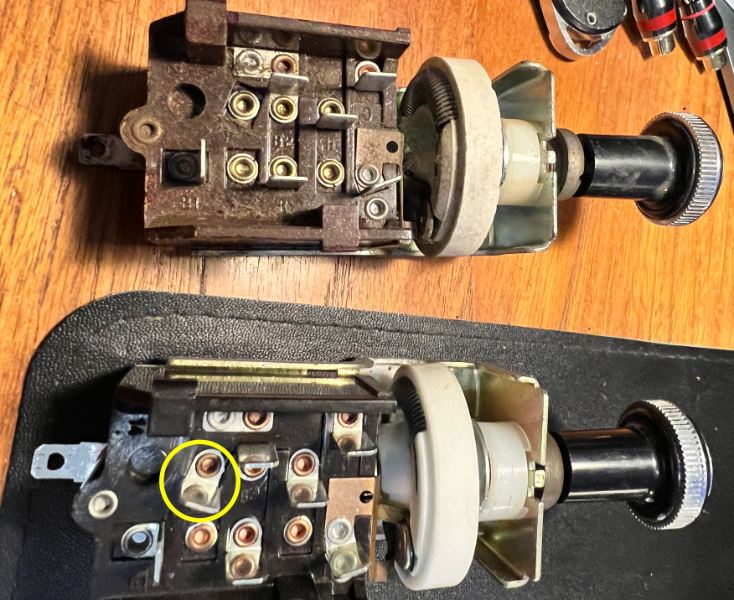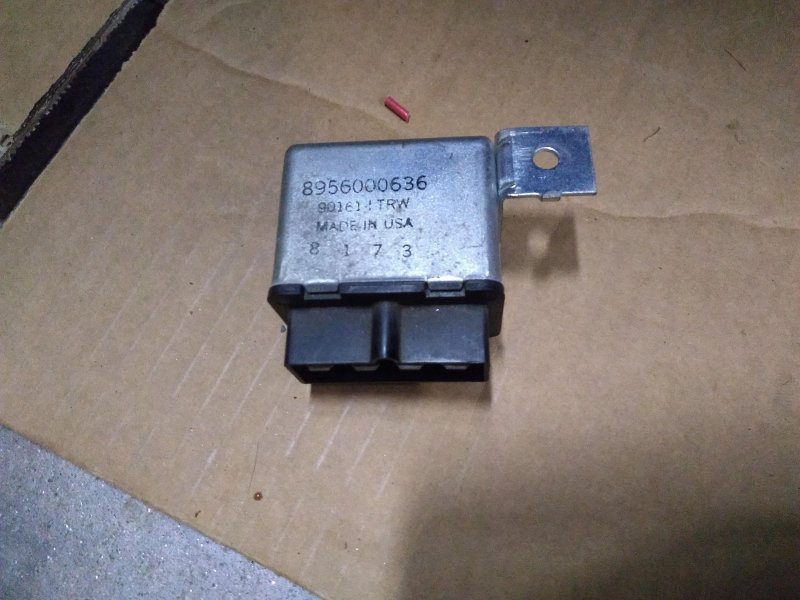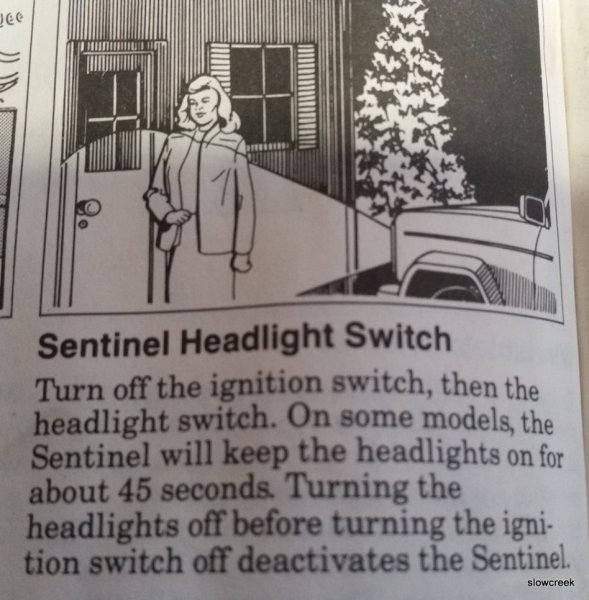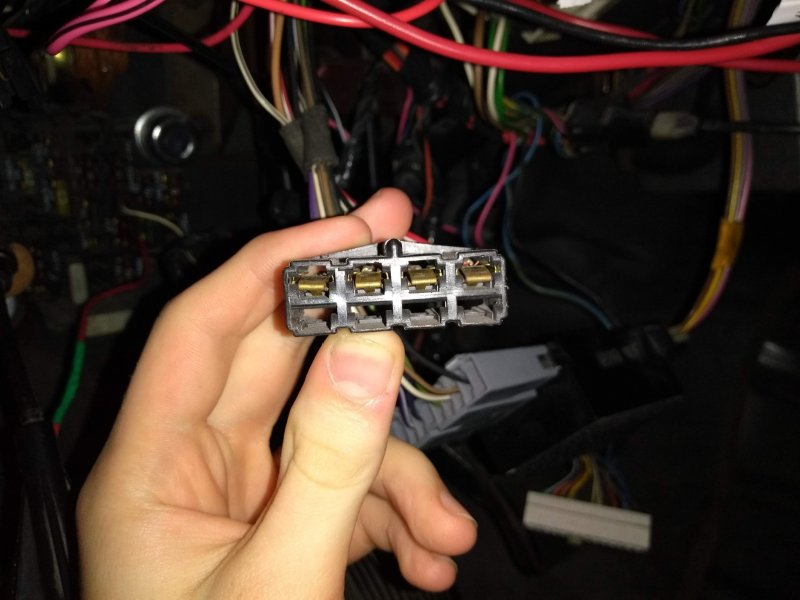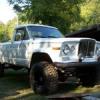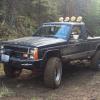Search the Community
Showing results for tags 'Headlights'.
-

dimmer Dash Lights Work, but Dimmer Doesn't...
NickyV posted a topic in MJ Tech: Modification and Repairs
Hey everybody! Just wanted to report that I was experiencing a problem that I know others have had. The issue was my dashboard/instrument cluster lights were working, but I wasn't able to dim them. As others have noted, this can be related to a malfunctioning headlight switch. I fixed it by replacing the headlight switch. Here are the symptoms I was experiencing: - Dash/instrument lights would illuminate, but only when my headlight switch was rotated all the way to the left (counter clockwise). You know you've gone as far as you can go to the left when you hear/feel a click. - When I rotated the headlight pull knob to the right (clockwise), I would lose all dash/instrument illumination as soon as the switch clicked going in the clockwise direction. The clock would also go out. I went to the junkyard and grabbed a bunch of things, including two headlight switches. One was from a 1991 Cherokee (pictured top) and the other was from a 1988 Cherokee Laredo (pictured bottom). (I hope I'm remembering that correctly...) The switch that I ended up trying first was the bottom switch (the one that I believe came from the '88 Cherokee Laredo). I mention the one I chose for a two reasons. First, it just looked like it was in better condition, as you can see from the pictures. The ceramic wheel was not yellowing as much as the other one, and the terminals were a lot cleaner. If you have multiple switches to choose from, and don't have the know how or equipment to test them out, go with the equipment that looks better (at least that's what I say). Second, after I pulled my busted switch out, I noticed that it looked a lot closer to the top switch in the picture I have attached. Specifically, it did not have the terminal prong that I have circled in the attached picture. I took a gamble and went with the switch that had an extra prong. I figured that it probably wouldn't hurt anything, and it might give me additional functionality in the long run. If anyone knows what the extra prong is for, I'd appreciate your answer in the comments section. It's a bit of a pain to swap these out. I highly recommend removing the kickplate/lower dash. I think it would be possible to do without removing the lower dash, but you'd be working almost entirely blind. It's a whole lot easier to get out if you remove the instrument cluster as well, but I don't recommend doing that if you don't have to (especially if you've never removed the instrument cluster before). When removing the instrument cluster you have to be really careful, and it's very easy to accidentally mess up your speedometer cable. Anyway, while I was at the junkyard, I also picked up some courtesy lights for the footwells. I am so happy I have these now! They illuminate when I open the driver's side door (but not the passenger door... perhaps that's by design, but I'm thinking that I need to do some more tinkering). They also light up when I turn the headlight knob all the way to the left (counter clockwise). And I'm hoping that when I get the time to tinker with the wiring in the pillar lights, that I'll be able to get those to light up when I open the door, but that's a project for another weekend. If anyone knows why my courtesy lights might not be lighting up when I open the passenger door, I'm all ears! I'm including a video of a guy explaining how to remove it:- 23 replies
-
- dashboard
- headlights
-
(and 2 more)
Tagged with:
-
Hey all! Long time lurker, first time poster here. I recently acquired a 1991 jeep comanche and am sorting through its electrical problems. The main one I am concerned about is that when I turn the headlights on, the driver side headlight stays off and the driver brake light turns on instead. it stays solid and is not overridden by turn signals or hazards. The driver headlight is functional with high beams, but the driver brake light still stays on. Another one is the hazards blink aggressively fast and turn solid when the brakes are pressed, and the reverse lights do not come on despite new reverse lights. It is worth mentioning I am using LED headlights and have a front end faceswap. I already checked the taillight ground, replaced the bulbs with the appropriate ones, and there are no hacked in trailer harnesses that I can see. Any help would be greatly appreciated
- 2 replies
-
- brake lights
- headlights
-
(and 2 more)
Tagged with:
-
I just bought a 1986 2.8l mj from California and my marker lights and running lights don’t work. My headlights come on and there’s a new switch. Does anyone know where to get a wiring diagram for the lights?
- 3 replies
-
- headlights
- running lights
-
(and 1 more)
Tagged with:
-
I couldn’t find a write up on this and decided to create one. More photos will be added soon and wiring information. This is one of the easiest and fastest upgrades you can do. Here’s information from the owner’s manual on this feature. . Photo Credit cruiser54.com List of Parts Needed 25 amp fuse Timer relay part #56000636 or 56009324 located under the steering column mounted to the dash. Photo of relay Connector for the relay if your truck doesn’t have it already. The Install Step 1: Look under your dash and there should be a plug in place already that has nothing connected to it. Looks like this. Step 2: Plug timer relay into the plug and Velcro or bolt relay to the dash. Step 3: Located on fuse box a spot that says HDLPDLY and add a 25 amp fuse to that location. Testing for a successful install Step 1: Turn key to on Step 2: Turn headlights on Step 3: Turn key to off Step 4: Turn headlights off If the Install is successful, the headlights will stay on for 30 seconds. Wiring Information Trouble Shooting Information Step 1: Make sure the module is fully plug in. Step 2: Check HDLPDY fuse and if the fuse is bad replace with 25 amp fuse.
-
I have a 89 and when I turn on the blinker it doesn’t blink the light just stays solid. The bulb and the blinker work but do not blink. However when I turn on my headlights they do not turn on at all and I also have both indicators in the dash lit up.
-
This is a writeup that can be used with any MJ front clip, but should only be used on MJs that have gone through the Cherokee (XJ) Wagoneer front clip conversion. As some of you may already know, while rare, this is a pretty popular front clip swap for us and cherokee owners alike. This is my 1990 with the factory front clip. This is her after the swap. This is a 100% direct bolt on conversion for 87-92 MJs, the 1986 year model may look the same as all the rest, but it is NOT. While it is possible to put later front clips onto an 86, including the wagoneer, it is much more involved. I know this because i gave my original front clip to a friend of mine with an 86 (SpectorMJ). It was a royal PITA trying to figure out a way to make it work. Anyway. . . . The reason why I suggest to limit this to only Wagoneers is because of their separate High and Low beam lenses. Bottom are low beams, top are high. Because they are physically separated it prevents dangerous temperature levels inside the unit. Unlike on a traditional front clip where both filaments are enclosed in the same sealed unit and have the potential to generate damagingly high levels of heat. Shortining the life span of the light and in the very worst case senerio, start an electrical fire. YOU HAVE BEEN WARNED. Onto the instrutional! You will need: 2 relays with matching relay buckets and pig tails Wire Wire crimpers/cutters Butt connectors Electrical tape Corrugated electrical tubing Heat shrink Lighter This is my relay bank on the drivers side fender. The two in the middle are responsible for the Headlights. The really nice thing about these relays is that they interlock and have mounting taps. So, the wiring. It took me several days to come up with a solution, but once I did it was acutally quite easy to implement. #1 Locate your Headlight connector and unplug it. #2 On the Engine/Body harness section of the connector, locate the solid GREEN and WHITE wires. #3 Trace them back a good distance. A good 10" away from the connector #4 Cut the WHITE wire. #5 Locate the wires on both relays that correspond to the 85 slot and splice them into the section of the WHITE wire that goes to the fire wall, NOT the section that goes to the connector. This is the "signal wire" that will trip the relay. I cannot tell you what color wire because nearly all relays are different. Something you need to be thinking of in the meantime is where you are going to draw your power from and where you are going to ground these two relays. Your "incoming power" (30) and "ground" (86) slots are located here. . . . The part about finding ground and power was easy for me because i have installed a marine grade auxillary fuse box which has both direct battery positive and negative terminals using 4 gauge audio wire. #6 Using one of the relays, find and splice in the "outgoing power" wire into the remaining cut portion of the white wire. If you have done right so far, this portion of the white wire will be going TO the headlight connector. #7 At this point you should have all wires ( 2 incoming power, 2 ground, 2 signal, and 1 outgoing) connected. All that should be left is one outgoing power wire. #8 Now you can splice this wire into the GREEN wire you located at the very beginning. Cut and crimp all three wire ends together. The remaining outgoing power, and the two cut ends of the green wire. In the picture above you can see my connection just above the text box. If you have done everything right, your high and low beams should now come on together when you pull the lever on the steering column to engage "high" beams. Your lows beams will still fuction normally as well. Best of luck, :thumbsup: Ftpiercecracker.
-
Ok so if you own an XJ Wagoneer, or have an XJ Wagoneer grill on your XJ or MJ like I do, you probably know that the top 2 lights are your low beams, and the bottom 2 are your high beams. This will tell you how to make only the top 2 low beams come on with low beams, but all 4 come on with high beams. Low Beams: Factory High Beams: After the Swap's High Beams: You will need: -3 relays -14 gauge wire (I recommend black, red, white, and green, to match the factory wiring) -Spade connectors -Wire crimpers -Wire strippers Here is a wiring diagram that my dad drew up: Start by locating your headlight harness wiring. You have a black plug under the air box on the drivers side. You will need to uninstall this to access the plug. While you are accessing the plug, Cruiser recommends using an electronics cleaner inside. It likes to get green inside, which causes resistance. You can find more information on his Renix Tips Thread Now you need to decide where you want to mount your 3 relays. I mounted mine where the core support bolts to, I don't have the factory air box. There is also room on the drivers side inner fender. Next, you need to decide where you want to splice in to your headlight harness wiring. I did mine on the header panel side of the plug. The only downfall to this is if you uninstall your header panel, you will need to unplug the relays. The upside is that you have more to work with. Here are the relays and their diagrams Ok, on to the wiring: Your low beams are controlled by a solid green wire. There is also a green wire with a black stripe. I believe this goes to your factory fog lights, but I'm not sure on that. Your high beams are controlled by a solid white wire. This part is the exact same as a normal headlight relay swap. You are going to make 2 separate systems. 1- Cut the green wire so you have plenty to work with on both sides. If you're standing at the driver's tire, to your left will be the header panel, and your right will be the cab of the Jeep. The left side will be to the lights, the right side will be from the switch. You will need to extend both these wires so they are long enough to reach your relays. The switch side of the green wire will go to either 85 or 86 on the relay. The other goes to ground. It does not matter which you choose. 2- You need 12v from the battery that goes on 87. I would run 2 separate 14 gauge wires (In red) that are both fused. 3- Now hook the headlight side of the green wire to 30 on the relay. 4- In the spade connector on 3 of the low beam relay (green) you are going to make a jumper to the 3rd relay. You are going to add another piece of green wire that is about 4-6 inches long, and add a spade connector on the end of that. So the headlight side of the green wire will have 2 spade connectors on it. Once you have completed this, leave it, we will come back to it later. Now you will do something similar for the white wire: 5- Cut the white wire so you have plenty to work with on both sides. If you're standing at the driver's tire, to your left will be the header panel, and your right will be the cab of the Jeep. The left side will be to the lights, the right side will be from the switch. You will need to extend both these wires so they are long enough to reach your relays. The switch side of the white wire will go to either 85 or 86 on the relay. The other goes to ground. It does not matter which you choose. 6- Now you will hook the other red 14 gauge wire that you ran to the 87 on your relay. 7- Now hook the headlight side of the white wire to 30 on the relay. You will need to make 2 jumpers out of white wire, just as you did with the green wire. The white wire will have 3 spade connectors, all 4-6 inches apart from each other. If you follow the wire at this point, it will come from the headlights, to 30 on your relay, then 2 more spade connectors. I hope that made sense. Now you will wire your 3rd relay: 8- Hook either 85 or 86 to ground, again, it doesn't matter which you choose, but I would do the same on all 3 for consistency. 9- Connect one of the spades on the white wire jumper (Which comes from 30 on the high beam relay) To 85 or 86 on the 3rd relay (Whatever you didn't pick for ground) 10- Connect the remaining white jumper to 87 on the 3rd relay. 11- Use the green jumper you made in step 4 (Coming from 30 on the low beam relay) and connect it to 30 on your 3rd relay. And here is what my relays look like all mounted: I hope this makes sense to you guys. I know the wiring is a little messy, but pretty much the low beam relay is only going to power the low beams, and the high beam relay will power both the high beams and the low beams. I understand this could be done with a diode, but it would need to be 20 amp, which I could not find. I had relays lying around, so why not.
-
Low beams work fine, but the high beams after running for about 10 min will begin to cycle on and off. On for 6 sec, Off for 8 sec, On for 7 sec, Off for 7 sec, so on and so forth. Headlights are factory output, no fancy dancy HIDs or H4s. I am already pretty darn sure its a headlight switch issue, but before i go diving head first into my dash (again) i wanted to ask the local panel of experts. Ftpiercecracker.
- 7 replies
-
- headlights
- high beams
-
(and 1 more)
Tagged with:
-
Hey guys, I was going through some builds and saw some people with LED headlights. I started looking around and found them for a great deal on EBAY. $390 shipped http://www.ebay.com/itm/Truck-Lite-27450C-Single-Rectangular-LED-5-X-7-Truck-Jeep-XJ-YJ-Headlight-/360719948850

